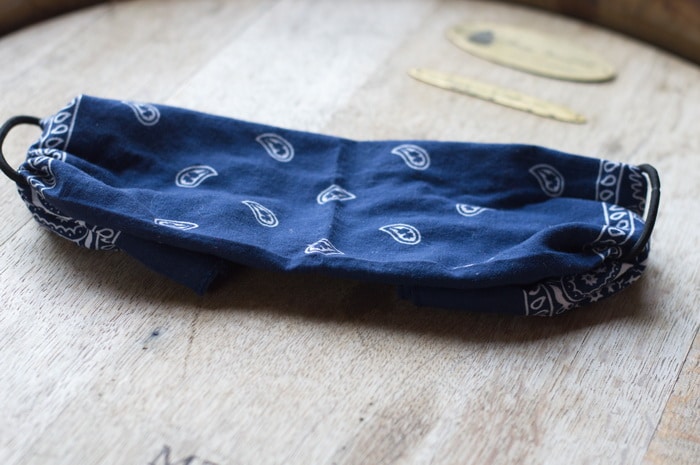
DIY cloth face mask without sewing
YOU’LL NEED:
- 1 bandanna or a square of 100% cotton fabric or T-shirt fabric 20 x 20 inches.
- 2 elastic hair ties
- 3 1/2 inch piece of pipe cleaner or a twist tie
- Optional filter piece for the inside of the mask
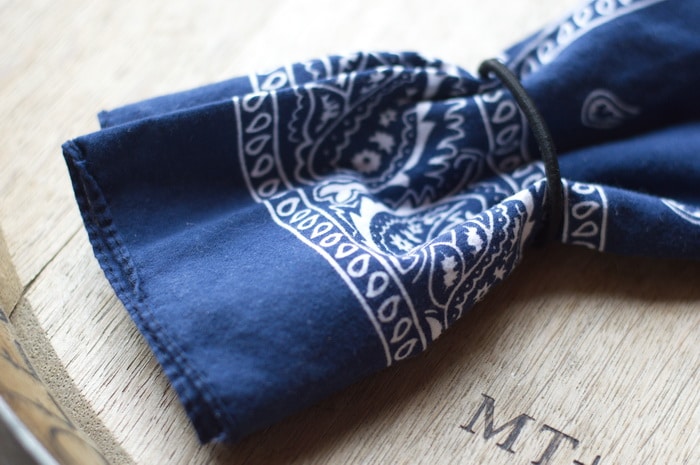
DIRECTIONS:
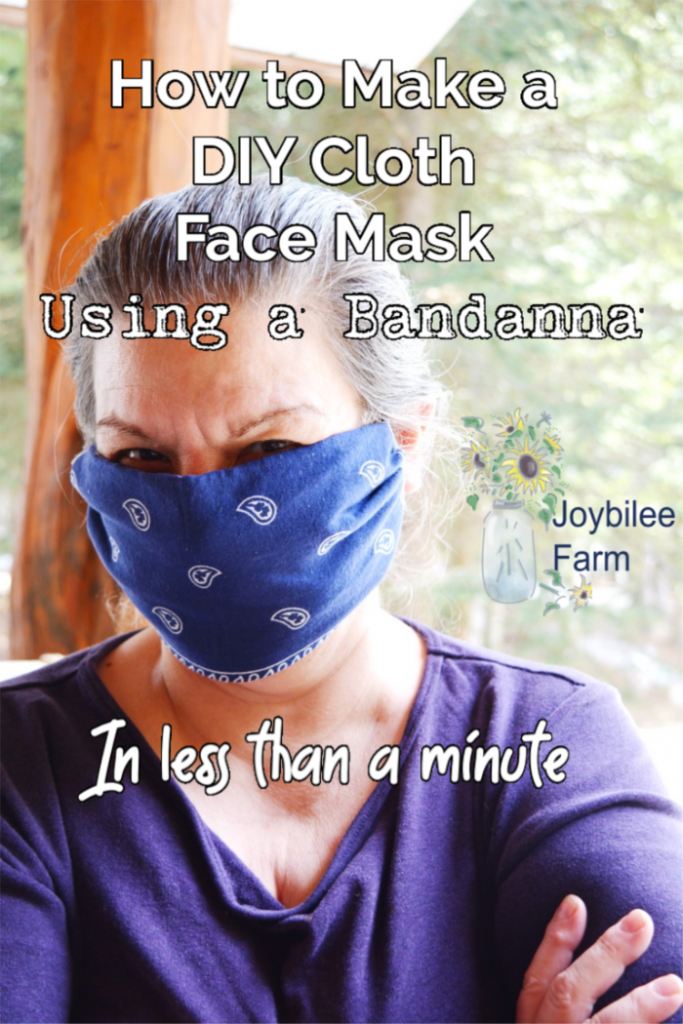
Watch the instruction video:
Can a DIY cloth face mask protect you against the virus?
A 2008 study done in the Netherlands compared the efficiency of DIY Face Masks with surgical masks and N95 respirator masks. In this study they found that a single layer of cotton tea towel fabric blocked 50% to 60% of airborne particles as small as .02 microns. See the study here.
When the masks were worn their efficiency improved over time. After 3 hours of use, homemade masks captured 68.8% of the .02 micron size particles.
A 2009 Cambridge study tested weather a homemade mask using t-shirt material could protect against influenza viruses. These homemade masks blocked 69% of 1 micron size particles (plague size and anthrax size particles) and 50% of the .02 micron size particles.
How big is the coronavirus?
Coronavirus particles are .06 to .14 microns, 7 times larger than the microns tested by scientists using homemade masks in the Netherlands study.
Does household face mask use actually prevent viral spread?
A 2009 Australian study showed that wearing a mask during exposure to people with viruses reduces the risk of infection by 60 to 80%. The study was sponsored by 3M and compared the use of surgical masks, N95 respirator masks, and no mask use in household exposure, where a child in the house was diagnosed with a virus. There was no significant difference between the group that used a N95 respirator mask and the group that used a surgical mask, in infections. Household members were not trained to fit the mask. Masks were removed for eating.
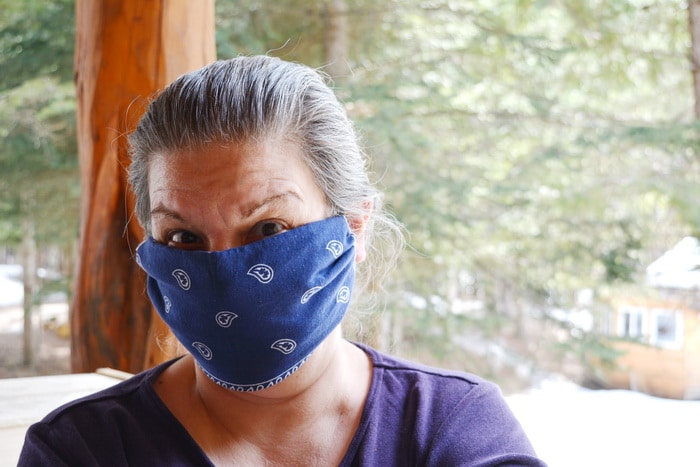
The Netherland study suggests that if the general population wears cloth masks, although they will be exposed to some viral particles it will give the general population time to develop immunity without widespread disease, since the viral load will be greatly reduced by mask use. This should allow better control of a novel virus for health authorities during a pandemic, so that hospital resources are not overwhelmed.
Which medical mask is better in clinical use?
A 2019 John Hopkins University 4 year study tested the clinical efficiency of surgical mask use vs. N95 mask use among hospital workers and found no significance difference in disease transmission between the two mask types even though N95 masks block 95% of coronavirus size particles and surgical mask block only 80%.
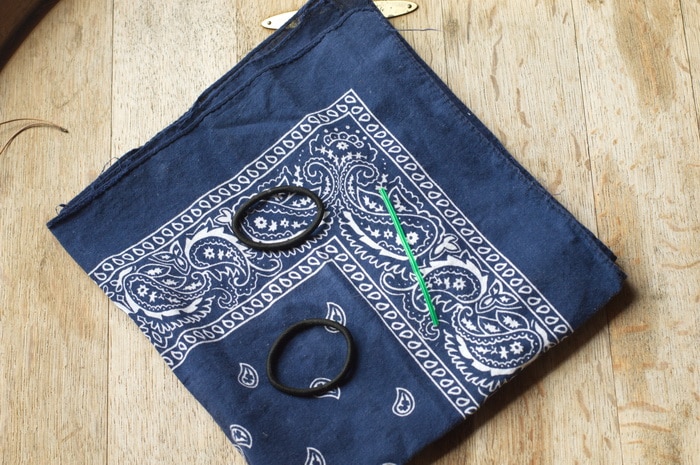
Should you wear a mask when going out?
Mask use can help slow the spread of respiratory viruses and bacteria. When people in the general population wear homemade masks, it can slow the spread of the virus and allow the general population time to develop natural immunity, while leaving available N95 masks and surgical masks for health care workers. Mask use must also be combined with other forms of prevention such as social distancing, not touching your face, and hand washing to effectively slow the spread of novel infectious diseases like Covid-19.
Further, countries with mandatory mask use, like Taiwan and Hong Kong, saw a faster reduction in virus cases during the Covid-19 pandemic, than countries where there is little to no mask use, like Italy. It seems wearing some type of mask when you go out would be prudent. CDC now recommends that people wear a diy cloth face mask when going out in public to slow the spread of viruses.
Find out what you need to stock up on to prepare for Quarantine or sheltering in place here.
Disclaimer: Homemade face masks are not medical grade. There is no guarantee that a homemade face mask and materials mentioned in this pattern will protect a user or others around them from COVID-19 or other hazards. Anyone who uses a homemade face mask and materials mentioned in this pattern does so at their own risk.





Leave a Reply